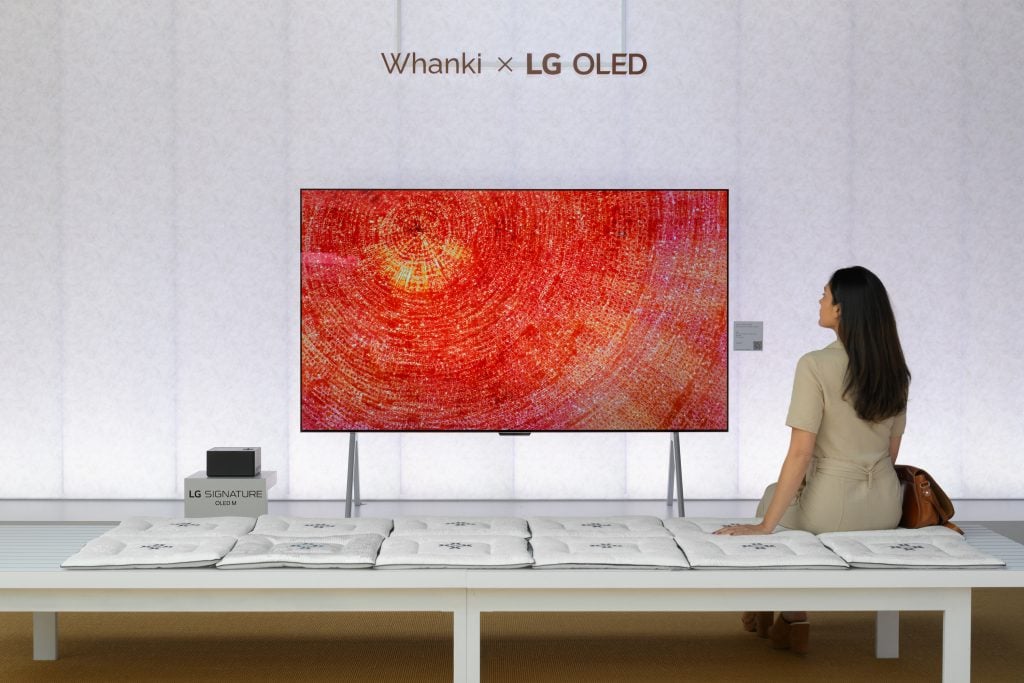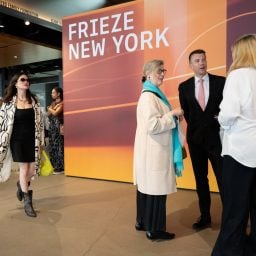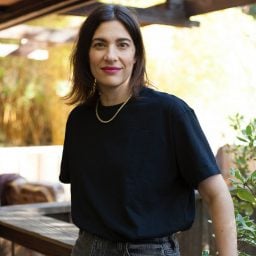Five digital expressions of legendary late Korean abstractionist Kim Whanki’s iconic paintings are casting a glow over the LG OLED Lounge at Frieze New York.
In the spirit of LG’s initiative at the Guggenheim and its involvement in Britain’s Venice Biennale pavilion, LG OLED has invited a group of Korean multimedia artists to reimagine a select few Kim masterpieces on screens, setting new standards for digital art display.
The showcase, titled “We Meet Again In New York,” coincides with “Whanki in New York,” a new show on view through June 13 at the Korean Cultural Center New York (KCCNY), presented in collaboration with Seoul’s Whanki Museum and LG OLED. Together, they mark Kim’s first extensive posthumous exhibitions in the city.

Installation image of Whanki x LG OLED showcase “We Meet Again In New York” at Frieze New York. Courtesy LG OLED and © Whanki Foundation. Whanki Museum
Stunning Displays
The concurrent showcases highlight Kim’s last decade as a working artist, which he spent in New York. Amidst the rising art capital’s thriving abstract expressionist scene, Kim’s practice of painting Korean cultural icons through international new styles developed into his now-legendary “all-over dots” paintings, which have since sold for millions. Each mark is entirely organic, rather than mechanically perfect, encapsulating the artist’s hand while creating a mesmerizing viewing experience, which is only emphasized by their new translation to LG OLED screens at Frieze.
They portray his paintings with startling clarity and even greater color precision than the 50-year-old artworks themselves. Some of the originals have faded and others aren’t suited to public display, due in part to their fragility or ownership by private collectors in Korea.
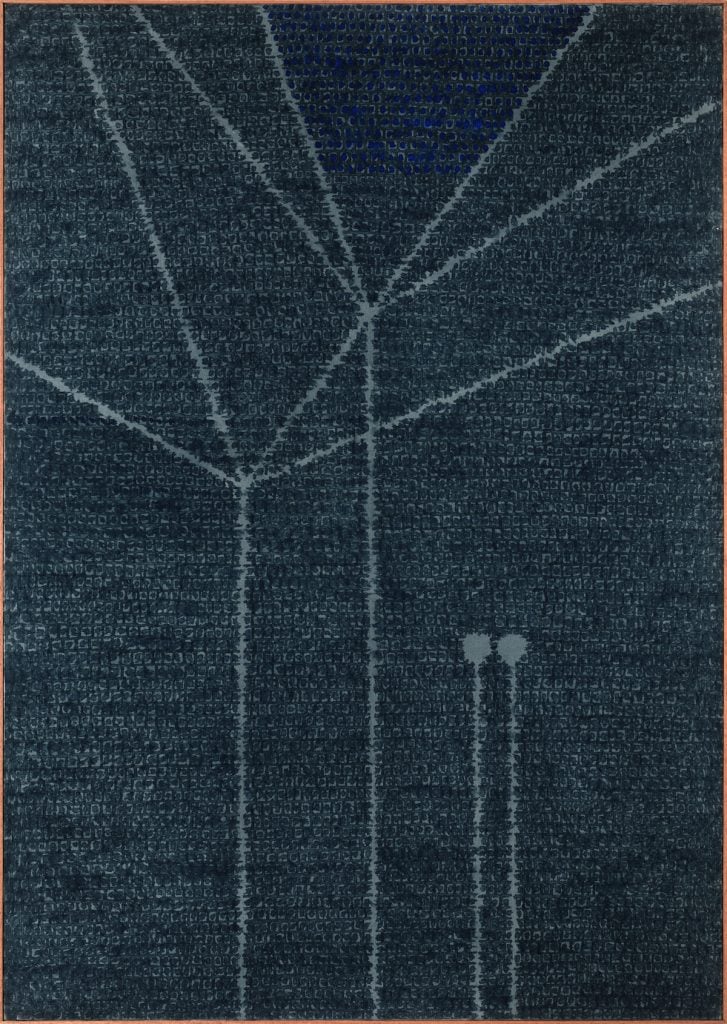
Kim Whanki, Duet 22-IV-74 #331 (1974). Digital Expression of Whanki’s painting, 2023. © Whanki Foundation.Whanki Museum
The five works across the presentation were translated by Seoul National University professor Je Baak, media art creator group Verseday, Ahn Graphics CEO Mano Ahnand, and BESIGN CEO Jason Kim. Each artist added touches of their own style to compliment the works.
7-VI-69 #65 (1969), animated by Ahn, radiates while layering the composition’s geometric elements piece by piece, to assemble the whole painting. Kim made the lines of 7-VII-74 (1974) dissipate and reemerge amongst the newly swirling and fading textures surrounding them.
The show’s centerpiece beams on a massive LG OLED screen featuring Kim’s scarlet, sun-themed 14-III-72 #223 (1972). At intervals, Verseday has made its sunspots and brushstrokes shimmer, accenting their textures. The animations emphasize Kim’s interest in creating a time-based viewing experience.
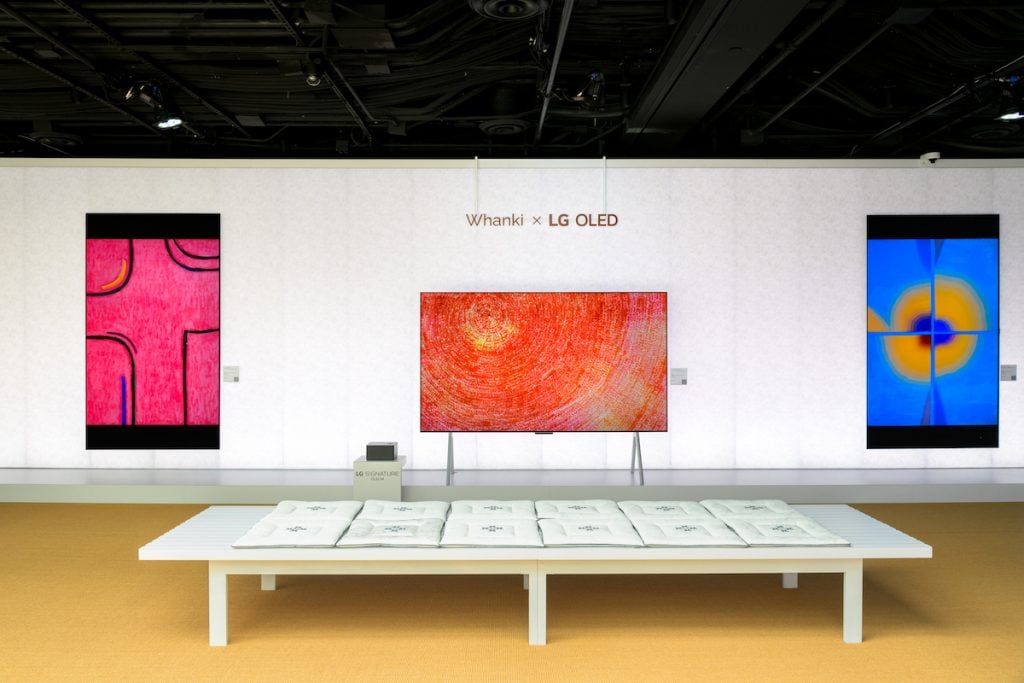
Kim Whanki’s masterpieces digitally expressed by LG Signature OLED M. © Whanki Foundation.Whanki Museum
An International Artist Drawn to New York
Though Kim was born in Korea and helped found the country’s pioneering Dansaekhwa movement, he also carried elements of Korean culture as he moved around the globe.
As an art student in Tokyo during the 1930s, Kim was drawn to Matisse and Picasso and started translating Korean motifs through modern styles. He returned to Korea and co-founded the influential New Realism Group. Decades later in the 1950s, Kim moved to Paris to tackle the canon. Despite his association with Korean lyricism and meditative abstraction, he sought a seamless integration of Eastern and Western aesthetics. He then traveled on to New York in 1963, thanks to a grant from the Asia Society.
Kim immediately fell in with the city’s expanding art scene, where he befriended Mark Rothko and Barnett Newman. He also inspired Nam June Paik. “Many people, even his most devoted fans, might not know that Kim Whanki, despite his achievements and comfortable life in Korea, moved to New York at the age of 50, where he passed away,” noted KCCNY curator Hee Sung Cho.
At the same time, he retained traditional imagery like moon jars in his work, balancing his cultural origins with the eye of an international artist. “By becoming a foreigner in a new city, he turned to his inner voice and created his own new world of art,” observed Park Mee-Jung, director of the Whanki Museum.
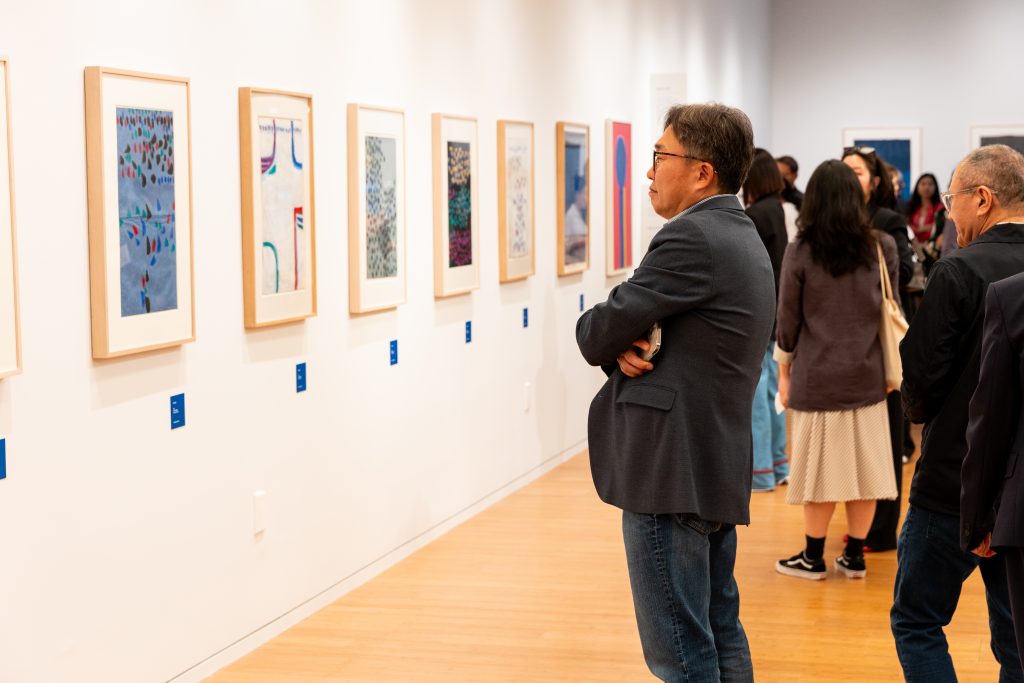
Installation view of “Whanki in New York” at the Korean Cultural Center New York (KCCNY), presented in collaboration with the Whanki Museum and LG OLED. Courtesy KCCNY and LG OLED.
Celebrating Kim’s Legacy
KCCNY and LG OLED Art shared the vision of reintroducing Kim Whanki to New York audiences through the Frieze display and the Whanki exhibition currently unfolding across KCCNY’s new seven-story home near Koreatown in Manhattan. “This collaboration was envisioned to create a unique showcase that combined cultural depth with cutting-edge technology,” said Hee Sung Cho, who helped make the partnership possible.
The KCCNY exhibition features loans from private collectors, including the famed sculptor John Pai, as well as numerous works provided by The Whanki Museum. Describing Kim’s legacy, the museum’s director, Park Mee-Jung, said: “His work, and the inspiring narrative of his life and artistic evolution across Korea, Brazil, Paris, and New York, has led to an ever-increasing global recognition of his art and impact on the history of Korean art.”
Kate Oh, Vice President of the Brand Communication Division at LG, emphasized the importance of the collaboration: “With this incredible presentation of digital expressions of Whanki’s artworks at Frieze New York, and our partner exhibition at the Korean Cultural Center New York, we hope to contribute to Whanki’s lasting legacy in New York City.”
